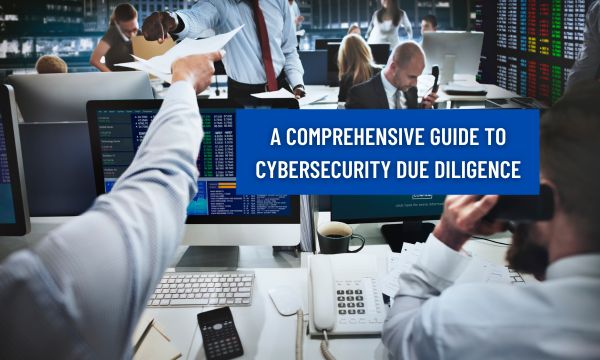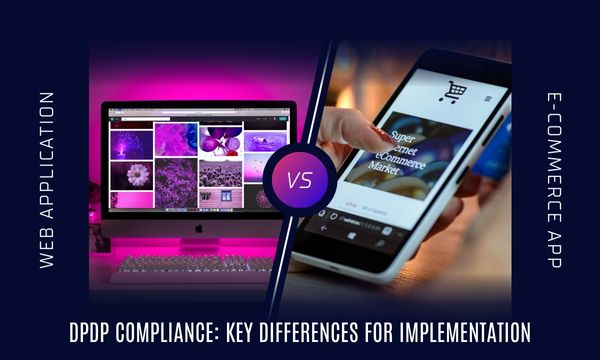
In today's digital landscape, where cyber threats lurk around every corner, the need for robust cybersecurity measures has never been more critical. Whether you're contemplating a merger or acquisition, or simply aiming to fortify your organization's defenses, conducting cybersecurity due diligence is paramount. This comprehensive guide will walk you through the step-by-step process of preparing for and performing cybersecurity due diligence, ensuring that your organization stays one step ahead of potential threats.
I. Pre-Due Diligence Preparation
Before diving into the intricacies of cybersecurity due diligence, it's essential to lay a solid foundation:
-
Define Objectives and Scope: Clearly outline the goals of your cybersecurity due diligence efforts and determine the scope of the assessment. Consider factors such as the size of your organization, the complexity of your IT infrastructure, and any specific regulatory requirements.
-
Identify Key Stakeholders: Assemble a multidisciplinary team comprising IT professionals, cybersecurity experts, legal advisors, and senior management representatives. Each stakeholder brings a unique perspective to the table, ensuring a comprehensive assessment.
-
Develop a Timeline and Allocate Resources: Establish a timeline for the due diligence process, taking into account factors such as the complexity of the assessment and the availability of resources. Allocate sufficient resources, including personnel, tools, and budget, to support the endeavour effectively.
II. Information Gathering and Documentation Review
With the groundwork laid, it's time to gather relevant information and review key documentation:
-
Request and Review Documentation: Obtain documentation related to cybersecurity policies, procedures, and controls, as well as any previous incident reports, third-party assessments, and compliance audits. Thoroughly review these documents to gain insights into the organization's cybersecurity posture.
-
Assess Compliance: Evaluate the organization's compliance with relevant regulations and standards, such as GDPR, HIPAA, PCI DSS, or industry-specific cybersecurity frameworks. Pay particular attention to areas where non-compliance may pose significant risks.
III. Technical Assessment
Now, let's delve into the technical aspects of cybersecurity to ensure a thorough evaluation:
-
Conduct Vulnerability Assessments and Penetration Tests: Utilize specialized tools and methodologies to conduct vulnerability assessments and penetration tests. These tests simulate real-world cyber attacks to identify weaknesses in the organization's network and systems. By uncovering vulnerabilities proactively, you can take steps to address them before they are exploited by malicious actors.
-
Assess the Effectiveness of Security Controls: Evaluate the efficacy of existing security controls such as firewalls, antivirus software, and intrusion detection systems. Determine whether these controls are configured correctly and operating effectively to defend against cyber threats. Any weaknesses or gaps in security controls should be addressed promptly to enhance the organization's overall security posture.
-
Review Access Controls, Identity Management Systems, and Encryption Mechanisms: Examine access controls and identity management systems to ensure that access privileges are granted only to authorized users and devices. Evaluate the strength of encryption mechanisms used to protect sensitive data both in transit and at rest. Implementing robust access controls and encryption measures is essential for safeguarding sensitive information from unauthorized access and disclosure.
-
Evaluate the Resilience of Backup and Disaster Recovery Processes: Assess the organization's backup and disaster recovery processes to ensure resilience against data loss and system downtime. Verify the adequacy of backup procedures, frequency of backups, and the ability to restore systems and data in the event of a cyber incident or natural disaster. A comprehensive backup and disaster recovery strategy is critical for minimizing disruptions and restoring normal operations swiftly.
IV. Risk Analysis and Mitigation Strategies
With a clear understanding of the organization's cybersecurity posture, it's time to analyze risks and develop mitigation strategies:
-
Identify and Prioritize Risks: Identify cybersecurity risks based on their likelihood and potential impact on the organization. Prioritize risks to focus resources on addressing the most critical vulnerabilities first.
-
Develop Mitigation Strategies: Develop comprehensive mitigation strategies to address identified risks, taking into account technical, procedural, and organizational measures. Consider factors such as cost, feasibility, and impact on business operations when developing mitigation plans.
-
Legal and Compliance Considerations: Ensure compliance with relevant data protection laws, industry regulations, and contractual obligations. Review privacy policies, data handling practices, and cyber insurance coverage to mitigate legal and compliance risks.
V. Reporting and Recommendations
Compile your findings into a comprehensive report and provide actionable recommendations:
-
Compile Findings: Summarize the results of the cybersecurity due diligence process, including key findings, identified risks, and recommended actions. Present the information clearly and concisely, catering to both technical and non-technical stakeholders.
-
Provide Recommendations: Offer actionable recommendations for improving the organization's cybersecurity posture and mitigating identified risks. Tailor recommendations to address specific vulnerabilities and align with the organization's risk tolerance and business objectives.
-
Communicate Findings: Communicate findings and recommendations to relevant stakeholders, including senior management, board members, and potential investors or acquirers. Foster open dialogue and collaboration to ensure that cybersecurity concerns are addressed effectively.
VII. Legal and Compliance Considerations
In addition to technical assessments, it's crucial to address legal and compliance considerations to mitigate regulatory risks:
-
Evaluate Compliance with Relevant Data Protection Laws, Industry Regulations, and Contractual Obligations: Ensure that the organization complies with applicable data protection laws, industry regulations, and contractual obligations. Assess adherence to standards such as GDPR, HIPAA, PCI DSS, or industry-specific cybersecurity frameworks. Non-compliance can result in severe penalties and reputational damage, making it essential to prioritize compliance efforts.
-
Assess the Adequacy of Privacy Policies and Data Handling Practices: Review the organization's privacy policies and data handling practices to assess their adequacy in protecting personal and sensitive information. Verify that data is collected, processed, and stored according to legal requirements and industry best practices. Strengthening privacy policies and data handling practices enhances trust with customers and stakeholders while mitigating the risk of data breaches and regulatory violations.
-
Review Cyber Insurance Coverage and Contractual Indemnification Clauses: Evaluate the organization's cyber insurance coverage to ensure adequate protection against financial losses resulting from cyber incidents. Review contractual indemnification clauses to understand liability and responsibility in the event of a data breach or cybersecurity incident. Cyber insurance can provide an additional layer of financial protection and peace of mind, complementing cybersecurity measures and risk management strategies.
VIII. Post-Due Diligence Follow-Up
The journey doesn't end with the completion of cybersecurity due diligence:
-
Monitor Progress: Monitor progress on the implementation of recommended cybersecurity measures and mitigation strategies. Track key performance indicators to gauge the effectiveness of controls and identify areas for improvement.
-
Conduct Periodic Reviews: Conduct periodic reviews and reassessments to ensure ongoing compliance with regulations and standards. Stay vigilant against emerging cyber threats and adapt cybersecurity measures accordingly.
-
Update Policies and Procedures: Update cybersecurity policies and procedures based on lessons learned from the due diligence process and evolving threat landscapes. Foster a culture of continuous improvement and cybersecurity awareness throughout the organization.
In conclusion, cybersecurity due diligence is a critical component of organizational risk management efforts, ensuring that your organization remains resilient in the face of evolving cyber threats. By following a structured approach and leveraging the expertise of multidisciplinary teams, you can effectively assess your cybersecurity posture, mitigate risks, and safeguard your organization's assets and reputation. Remember, cybersecurity due diligence is an ongoing process that requires vigilance, adaptability, and collaboration across all levels of the organization. With a proactive approach to cybersecurity, organizations can navigate the evolving threat landscape with confidence and resilience.
In addition to the above steps organisations can consider a few additional aspects when performing cybersecurity due diligence:
1. Business Continuity and Incident Response Plans:
-
Evaluate the organization's business continuity and incident response plans to ensure preparedness for cyber incidents. Assess the effectiveness of incident detection, response, and recovery procedures to minimize the impact of security breaches on business operations.
2. Third-Party Risk Management:
-
Assess the cybersecurity posture of third-party vendors and service providers that have access to sensitive data or play a critical role in the organization's operations. Verify that third parties adhere to cybersecurity best practices and contractual security requirements to mitigate supply chain risks.
3. Employee Training and Awareness:
-
Review employee training programs and cybersecurity awareness initiatives to ensure that staff members are equipped with the knowledge and skills to recognize and respond to security threats effectively. Promote a culture of security awareness throughout the organization to mitigate the risk of human error and insider threats.
4. Emerging Threat Landscape:
-
Stay informed about the latest cybersecurity threats, vulnerabilities, and attack trends relevant to the organization's industry and technology stack. Continuously monitor threat intelligence sources and security advisories to adapt cybersecurity measures proactively and mitigate emerging risks.
5. Governance and Oversight:
-
Assess the organization's governance structure and oversight mechanisms related to cybersecurity. Verify that senior management and the board of directors are actively engaged in cybersecurity decision-making and risk management processes. Establish clear lines of accountability and responsibility for cybersecurity within the organization.
6. Cybersecurity Culture and Organizational Resilience:
-
Evaluate the organization's cybersecurity culture and resilience to cyber threats. Encourage collaboration, communication, and shared responsibility for cybersecurity across all departments and levels of the organization. Foster a culture of resilience and adaptability to respond effectively to evolving cyber threats.
7. Technology Adoption and Innovation:
-
Assess the impact of new technologies and innovation initiatives on the organization's cybersecurity posture. Evaluate the security implications of adopting emerging technologies such as cloud computing, IoT devices, and AI-powered solutions. Implement security-by-design principles to integrate cybersecurity into the development and deployment of new technologies.
By considering these additional aspects alongside technical and legal considerations, organizations can conduct a more holistic cybersecurity due diligence assessment. This comprehensive approach enables organizations to identify, prioritize, and mitigate cybersecurity risks effectively, safeguarding their assets, reputation, and long-term viability in an increasingly digital world. This guide covers all the aspects required for thorough cyber due diligence for an organisation, in case further assistance is required, a cyber security consulting organisation like Illume Intelligence can be contacted.



